
Young and dynamic data science and machine learning enthusiasts are all are very interested in making a career transition by learning and doing as much hands-on learning as possible with these technologies and concepts as Data Scientists or Machine Learning Engineers or Data Engineers or Data Analytics Engineers. I believe they must have the Project Experience and a job-winning portfolio in hand before they hit the interview process.
Certainly, this interview process would be challenging, NOT only for the freshers, but also for experienced individuals since these are all new techniques, domain, process approach, and implementation methodologies that are totally different from traditional software development. Of course, we could adopt an agile mode of delivery and no excuse from modern cloud adoption techniques and state beyond all industries and domains, who are all looking and interested in artificial intelligence and machine learning (AI and ML) and its potential benefits.
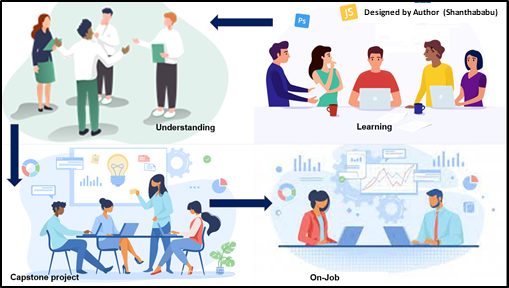
In this article, let’s discuss how to choose the best data science and ML projects during the capstone stages of your schools, colleges, training institutions, and specific job-hunting perspective. You could map this effort with our journey towards getting your dream job in the data science and machine learning industry.
Without much ado, here are the top 20 machine learning projects that can help you get started in your career as a machine learning engineer or data scientist. Let us move into a curated list of data science and machine learning projects for practice that can be a great add-on to your portfolio –
1. Data Science Project – Ultrasound Nerve Segmentation
Problem Statement & Solution
In this project, you will be working on building a machine learning model that can identify nerve structures in a data set of ultrasound images of the neck. This will help enhance catheter placement and contribute to a more pain-free future.
Even the bravest patients cringe at the mention of a surgical procedure. Surgery inevitably brings discomfort, and oftentimes involves significant post-surgical pain. Currently, patient pain is frequently managed using narcotics that bring a number of unwanted side effects.
This data science project’s sponsor is working to improve the pain management system using indwelling catheters that block or mitigate pain at the source. These pain management catheters reduce dependence on narcotics and speed up patient recovery.
The project objective is to precisely identify the nerve structures in the given ultrasound images, and this is a critical step in effectively inserting a patients pain management catheter. This project has been developed in python language, so it is easy to understand the flow of the project and the objectives. They must build a model that can identify nerve structures in a dataset of given ultrasound images of the neck. Doing so would improve catheter placement and contribute to a more pain-free future.
Let see the simple workflow.

Certainly, this project would help us to understand the image classification and highly sensitive area of analysis in the medical domain.
Take away and outcome and of this project experience.
- Understanding what image segmentation is.
- Understanding of subjective segmentation and objective segmentation
- The idea of converting images into matrix format.
- How to calculate euclidean distance.
- Scope of what dendrogram are and what they represent.
- Overview of agglomerative clustering and its significance
- Knowledge of VQmeans clustering
- Experiencing grayscale conversion and reading image files.
- A practical way of converting masked images into suitable colours.
- How to extract the features from the images.
- Recursively splitting a tile of an image into different quadrants.
2. Machine Learning project for Retail Price Optimization
Problem Statement & Solution
In this machine learning pricing project, we must implement retail price optimization and apply a regression trees algorithm. This is one of the best ways to build a dynamic pricing model, so developers can understand how to build models dynamically with commercial data which is available from a nearby source and visualization of the solution is tangible.

In this competitive business world PRICING A PRODUCT is a crucial aspect. So, we must gather a lot of thought process into that solution approach. There are different strategies to optimize the pricing of products. And must take extra care during the pricing of the products due to their sensitive impact on the sales and forecast. While there are products whose sales are not very affected by their price changes, they could be luxury items or essentials products in the market. This machine learning retail price optimization project will focus on the former type of products.
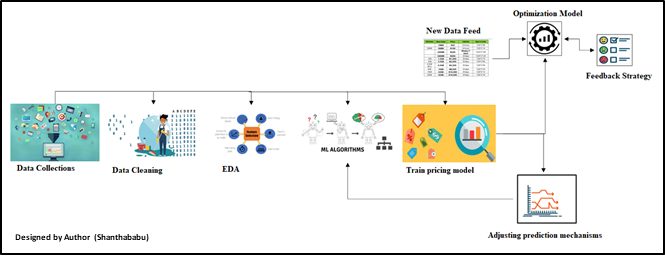
This project clearly captures the data and aligns with the Price Elasticity of Demand phenomenon. This exposes the degree to which the effective desire for something changes as its price the customers desire could drop sharply even with a little price increase, I mean directly proportional relationship. Generally, economists use the term elasticity to denote this sensitivity to price increases.
In this Machine Learning Pricing Optimization project, we will take the data from the café shop and, based on their past sales, identify the optimal prices for their list of items, based on the price elasticity model of the items. For each café item, the Price Elasticity will be calculated from the available data and then the optimal price will be calculated. A similar kind of work can be extended to price any products in the market.
Take away and Outcome and of this project experience.
- Understanding the retail price optimization problem
- Understanding of price elasticity (Price Elasticity of Demand)
- Understanding the data and feature correlations with the help of visualizations
- Understanding real-time business context with EDA (Exploratory Data Analysis) process
- How to segregate data based on analysis.
- Coding techniques to identify price elasticity of items on the shelf and price optimization.
3. Demand prediction of driver availability using multistep Time Series Analysis

Problem Statement & Situation
In this supervised learning machine learning project, you will predict the availability of a driver in a specific area by using multi-step time series analysis. This project is an interesting one since it is based on a real-time scenario.
We all love to order food online and do not like to experience delivery fee price variation. Delivery charges are always highly dependent on the availability of drivers in your area in and around, so the demand of orders in your area, and distance covered would greatly impact the delivery charges. Due to driver unavailability, there is an impact in delivery pricing increasing and directly this will hit the many customers who have dropped off from ordering or moving into another food delivery provider, so at the end of the day food suppliers (Small/medium scale restaurants) are reducing their online orders.
To handle this situation, we must track the number of hours a particular delivery driver is active online and where he is working and delivering foods, and how many orders are in that area, so based on all these factors certainly, we can efficiently allocate a defined number of drivers to a particular area depending on demand as mentioned earlier.
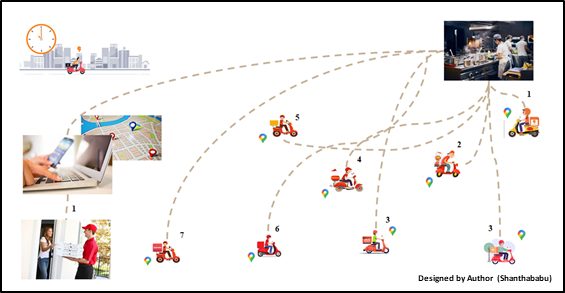
Take away and Outcome and of this project experience.
- How to convert a Time Series problem to a Supervised Learning problem.
- What exactly is Multi-Step Time Series Forecast analysis?
- How does Data Pre-processing function in Time Series analysis?
- How to do Exploratory Data Analysis (EDA) on Time-Series?
- How to do Feature Engineering in Time Series by breaking Time Features to days of the week, weekends.
- Understand the concept of Lead-Lag and Rolling Mean.
- Clarity of Auto-Correlation Function (ACF) and Partial Auto-Correlation Function (PACF) in Time Series.
- Different strategic approaches to solving Multi-Step Time Series problem
- Solving Time-Series with a Regressor Model
- How to implement Online Hours Prediction with Ensemble Models (Random Forest and Xgboost)
4. Customer Market Basket Analysis using Apriori and FP- growth algorithms
Problem Statement & Solution
In this project, anyone can learn how to perform Market Basket Analysis (MBA) with the application of Apriori and FP growth algorithms based on the concept of association rule learning, one of my favourite topics in data science.
Mix and Match is a familiar term in the US, I remember I used to get the toys for my kid. It was the ultimate experience you know. Same time keeping things together nearby, like bread and jamshaving razor and cream, these are the simple examples for MBA, and this is making the customer buy additional purchases more likely.

It is a widely used technique to identify the best possible mix of products or services that comes together commonly. This is also called Product Association Analysis or Association Rules. This approach is best fit physical retail stores and even online too. In other ways, it can help in floor planning and placement of products.
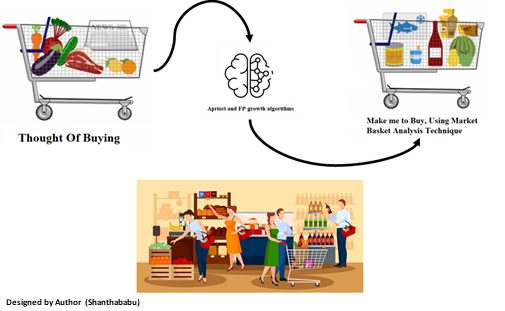
5. E-commerce product reviews – Pairwise ranking and sentiment analysis.
Problem Statement & Solution
Product recommendation systems for the products which are sold over the online-based pairwise ranking and sentiment analysis. So, we are going to perform sentiment analysis on product reviews given by the customers who are all purchased the items and ranking them based on weightage. Here, the reviews play a vital role in product recommendation systems.
Obviously, reviews from customers are very useful and impactful for customers who are going to buy the products. Generally, a huge number of reviews in the bucket would create unnecessary confusion in the selection and buying interest on a specific product. If we have appropriate filters from the collective informative reviews. This proportional issue has been attempted and addressed in this project solution.
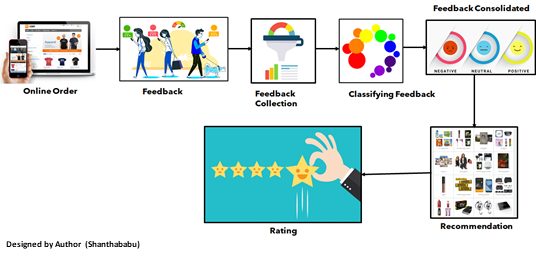
This recommendation work has been done in four phases.
- Data pre-processing/filtering
- Which includes.
- Language Detection
- Gibberish Detection
- Profanity Detection
- Feature extraction,
- Pairwise Review Ranking,
- Which includes.
The outcome of the model will be a collection of the reviews for a particular product and its ranking based on relevance using a pairwise ranking approach method/model.

Take away and Outcome and of this project experience.
- EDA Process
- Over Textual Data
- Extracted Featured with Target Class
- Using Featuring Engineering and extracting relevance from data
- Reviews Text Data Pre-processing in terms of
- Language Detection
- Gibberish Detection
- Profanity Detection, and Spelling Correction
- Understand how to find gibberish by Markov Chain Concept
- Hands-On experience on Sentiment Analysis
- Finding Polarity and Subjectivity from Reviews
- Learning How to Rank Like Pairwise Ranking
- How to convert Ranking into Classification Problem
- Pairwise Ranking reviews with Random Forest Classifier
- Understand the Evaluation Metrics concepts
- Classification Accuracy and Ranking Accuracy
6. Customer Churn Prediction Analysis using Ensemble Techniques
Problem Statement & Solution
In some situations, the customers are closing their accounts or switching to other competitor banks for too many reasons. This could cause a huge dip in their quarterly revenues and might significantly affect annual revenues for the enduring financial year, this would directly cause the stocks to plunge and the market cap to reduce considerably. Here, the idea is to be able to predict which customers are going to churn, and how to retain them, with necessary actions/steps/interventions by the bank proactively.
In this project, we must implement a churn prediction model using ensemble techniques.
Here we are collecting customer data about his/her past transactions details with the bank and statistical characteristics information for deep analysis of the customers. With help of these data points, we could establish relations and associations between data features and customer’s tendency to possible churn. Based on that, we will build a classification model to predict whether the specific set of customers(s) will indeed leave the bank or not. Clearly draw the insight and identify which factor(s) are accountable for the churn of the customers.
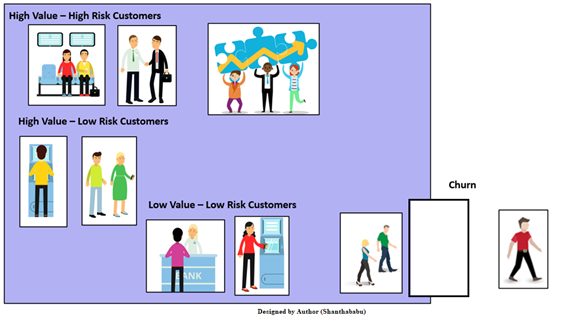
Take away and Outcome and of this project experience.
- Defining and deriving the relevant metrics
- Exploratory Data Analysis
- Univariate, Bivariate analysis,
- Outlier treatment
- Label Encoder/One Hot Encoder
- How to avoid data leakage during the data processing
- Understanding Feature transforms, engineering, and selection
- Hands-on Tree visualizations and SHAP and Class imbalance techniques
- Knowledge in Hyperparameter tuning
- Random Search
- Grid Search
- Assembling multiple models and error analysis.
7. Build a Music Recommendation Algorithm using KKBox’s Dataset.
Problem Statement & Solution
Music Recommendation Project using Machine Learning to predict the best chances of a user listening and loving a song again after their very first noticeable listening event. As we know, the most popular evergreen entertainment is music, no doubt about that. There might be a mode of listening on different platforms, but ultimately everyone will be listening to music with this well-developed digital world era. Nowadays, the accessibility of music services has been increasing exponentially ranging from classical, jazz, pop etc.,
Due to the increasing number of songs of all genres, it has become very difficult to recommend appropriate songs to music lovers. The question is that the music recommendation system should understand the music lovers favourites and inclinations to other similar music lovers and offer the songs to them on the go, by reading their pulse.
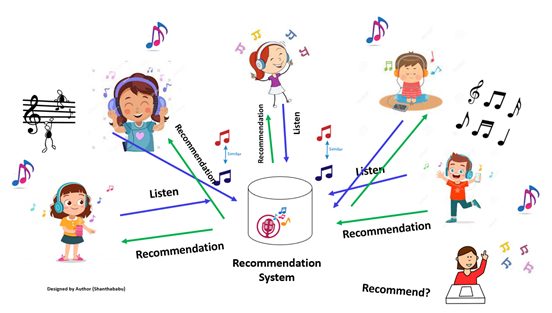
In the digital market, we have excellent music streaming applications available like YouTube, Amazon Music, Spotify etc., All they have their own features to recommend music to music lovers based on their listening history and first and best choice. This plays a vital role in this business to catch the customers on the go. Those recommendations are used to predict and indicate an appropriate list of songs based on the characteristics of the music, which has been heard by music lovers over the period.
This project uses the KKBOX dataset and demonstrates the machine learning techniques that can be applied to recommend songs to music lovers based on their listening patterns which were created from their history.
Take away and Outcome and of this project experience.
- Understanding inferences about data and data visualization
- Gaining knowledge on Feature Engineering and Outlier treatment
- The reason behind Train and Test split for model validation
- Best Understanding and Building capabilities on the algorithm below
- Logistic Regression model
- Decision Tree classifier
- Random Forest Classifier
- XGBoost model
8.Image Segmentation using Masked R-CNN with TensorFlow
Problem Statement & Solution
Fire is one of the deadliest risk situations. Generally, fire can destroy an area completely in a very short span of time. Another end this leads to an increase in air pollution and directly affects the environment and an increase in global warming. This leads to the loss of expensive property. Hence early fire detection is very important.
The Object of this project is to build a deep neural network model that will give precise accuracy in the detection of fire in the given set of images. In this Deep Learning-based project on Image Segmentation using Python language, we are going to implement the Mask R-CNN model for early fire detection.

In this project, we are going to build early fire detection using the image segmentation technique with the help of the MRCNN model. Here, fire detection by adopting the RGB model (Color: Red, Green, Blue), which is based on chromatic and disorder measurement for extracting fire pixels and smoke pixels from the image. With the help of this model, we can locate the position where the fire is present, and which will help the fire authorities to take appropriate actions to prevent any kind of loss.
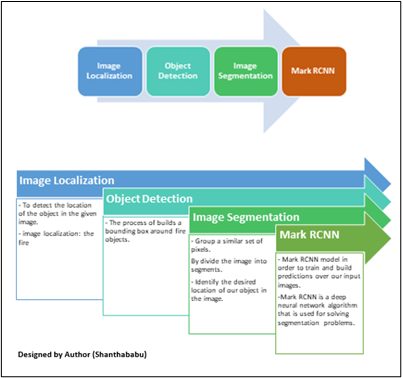
Take away and Outcome and of this project experience.
- Understanding the concepts
- Image detection
- Image localization
- Image segmentation
- Backbone
- Role of the backbone (restnet101) in Mask RCNN model
- MS COCO
- Understanding the concepts
- Region Proposal Network (RPN)
- ROI Classifier and bounding box Regressor.
- Distinguishing between Transfer Learning and Machine Learning.
- Demonstrating image annotation using VGG Annotator.
- The best understanding of how to create and store the log files per epoch.
9. Loan Eligibility Prediction using Gradient Boosting Classifier
Problem Statement & Solution
In this project, we are predicting if a loan should be given to an applicant or not for the given data of various customers who are all seeking the loan based on several factors like their credit score and history. The ultimate aim is to avoid manual efforts and give approval with the help of a machine learning model, after analyzing the data and processing for machine learning operations. On the top of the machine, the learning solution will look at different factors based on testing the dataset and decide whether to grant a loan or not to the respective individual.
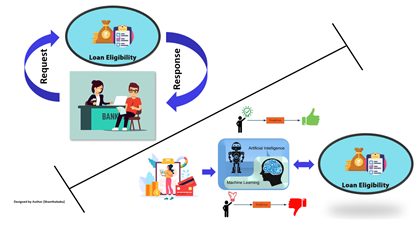
In this ML problem, we use to cleanse the data and fill in the missing values and bringing various factors of the applicant like credit score, history and from those we will try to predict the loan granting by building a classification model and the output will be giving output in the form of probability score along with Loan Granted or Refused as output from the model.
Take away and Outcome and of this project experience.
- Understanding in-depth:
- Data preparation
- Data Cleansing and Preparation
- Exploratory Data Analysis
- Feature engineering
- Cross-Validation
- ROC Curve, MCC scorer etc
- Data Balancing using SMOTE.
- Scheduling ML jobs for automation
- How to create custom functions for machine learning models
- Defining an approach to solve
- ML Classification problems
- Gradient Boosting, XGBoost etc
10.Human Activity Recognition Using Multiclass Classification
Problem Statement & Solution
In this project we are going to classify human activity, we use multiclass classification machine learning techniques and analyze the fitness dataset from a smartphone tracker. 30 activities of daily participants have been recorded through a smartphone with embedded inertial sensors and build a strong dataset for activity recognition point of view. Target activities are WALKING, WALKING UPSTAIRS, WALKING DOWNSTAIRS, SITTING, STANDING, LAYING, by capturing 3-axial linear acceleration and 3-axial angular velocity at a constant rate of 50Hz. The objective is to classify activities mentioned above among 6 and 2 different axials. This was captured by an embedded accelerometer and gyroscope in the smartphone. The experiments have been video-recorded to label the data manually. The obtained dataset has been randomly partitioned into two sets as 70% for training and 30% for test data.
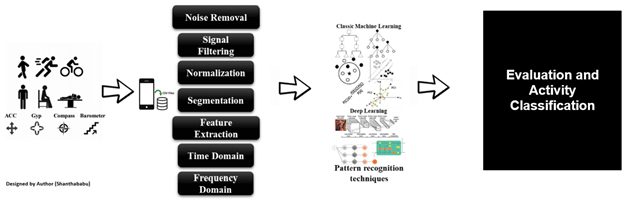
Take away and Outcome and of this project experience.
- Understanding
- Data Science Life Cycle
- EDA
- Univariate and Bivariate analysis
- Data visualizations using various charts.
- Cleaning and preparing the data for modelling.
- Standard Scaling and normalizing the dataset.
- Selecting the best model and making predictions
- How to perform PCA to reduce the number of features
- Understanding how to apply
- Logistic Regression & SVM
- Random Forest Regressor, XGBoost and KNN
- Deep Neural Networks
- Deep knowledge in Hyper Parameter tuning for ANN and SVM.
- How to plot the confusion matrix for visualizing the result
- Develop the Flask API for the selected model.
Project Idea Credits – ProjectPro helps professionals get their work done faster and with practical experience with verified reusable solution code, real-world project problem statements, and solutions from various industry experts.
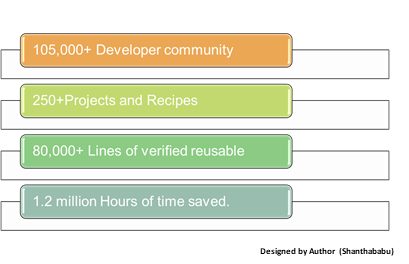
So far, We have discussed 10 different projects, Hope you could feel each one of them at least high level and clear goal of what is the objective of the project and learning take away While doing the projects as hands-on.
I am sure you could feel the essence of those and digesting each concept in Data Science and Machine Learning. Learn More always!
Will discuss 10 more projects in a short while, Until then, Bye! See you!
